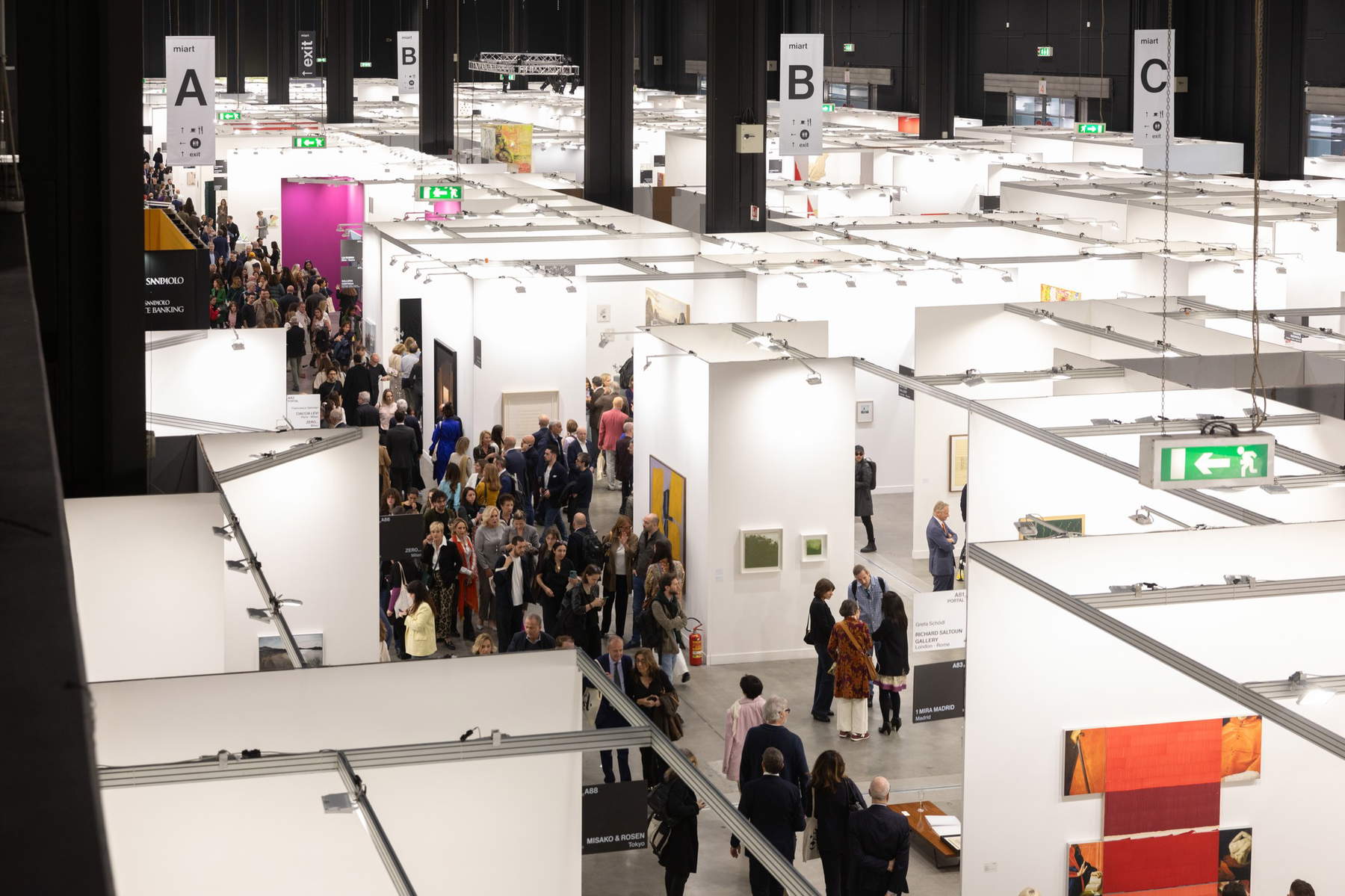Miart 2024: but is there really little subject matter or is it winking at the market?
“Gran traduttor dè traduttor d’Omero,” wrote Ugo Foscolo about the man of letters Vincenzo Monti. Here is the thought that came to my mind about Miart, Edition 2024.
In the maze of the route between the various pavilions, the galleries are not easy to locate, partly because the map of the fair is drawn up with such a small body that, even for me who wears glasses 24 hours a day, it is difficult to decipher. The effort was there, no doubt about it. We saw muscular evidence from some gallerists committed to giving their best. Some foreign presence was there.
What I observe, however, as a critic and art historian, is the general mannerism and citationism (and I am not referring to the historic 1980s movement) of several artists, more or less young, who hint, but not too much, that they are inspired, as if to make an homage, by the greats of modern and contemporary art history. Homage, however, which turns out, at times, to be a kind of copy-paste in total unscrupulousness, as if the visitors were all newly literate. But we are not in the nineteenth century, we are in the twenty-first century, and one finds oneself, just here and there, choosing flourishes, the artist with the most breadth and with a real drive, at least, for research. I am not making a general point, of course.

So I wonder, is there really little matter of contention, or are the choices made to wink at the market? I am certainly not a moralist, a fair is a fair, you have to sell. But at a historical moment like this, precisely because the market is found to be less bright than we would like, would it not be worthwhile to show, as some have done, a cultural path as well, what in the jargon is called the line, which then corresponds to an identity project: who are you and what do you do?
The all-Italian case of always exhibiting the same authors, for example, with little imagination and curiosity about even alternative proposals, or talented artists who are not often seen, even in museums, makes one think that one has to take a plane or a train to go and see what is happening just outside the boot. Far be it from me to be an outsider, but I get the feeling that one feels little “air of time.” It’s too bad, because visitors are many, Milan has become an international city (perhaps it always has been), and a little longer look wouldn’t hurt.
P.S. At Art Basel, several years ago (a millennium seems to have passed) gallery owner Lucio Amelio would change the booth every day, creating a sort of solo show of each artist in his stable. Good times.
Warning: the translation into English of the original Italian article was created using automatic tools. We undertake to review all articles, but we do not guarantee the total absence of inaccuracies in the translation due to the program. You can find the original by clicking on the ITA button. If you find any mistake,please contact us.




























